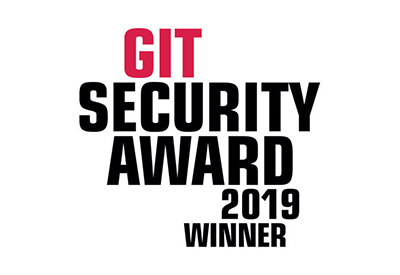SecurityBridge Wins GIT Security Award 2019

May 19, 2020
The application firewall SecurityBridge was awarded 3rd place in the GIT SECURITY Award. The award was presented on 27 November 2018 at SPS IPC Drives in Nuremberg.
The GIT SECURITY AWARD is awarded nationally and internationally. Three innovative products with the most votes were selected from a total of six categories. SecurityBridge was competing in “Category A – IT-Security and Safety for Automation, Cyber Security”. It convinced our customers, partners, market players and readers of the magazines GIT SICHERHEIT, GIT SECURITY and messtec drives Automation and won through against 14 more finalists.
This is how to use SecurityBridge
SecurityBridge can be connected upstream of the PNOZmulti base unit or PLC controller PSSuniversal PLC. It acts as a VPN server, through which it is possible to establish a virtual private network (VPN) to one or more client PCs (configuration PC). The connection between PC and device is therefore protected. Only users with the relevant permission can make changes to a project’s configuration. This prevents unauthorised access to the secured network. As a result, data transfer between the client PC and SecurityBridge is protected against tapping and manipulation.
The SecurityBridge also controls the process data traffic and monitors the integrity of the safety system. Changes in the check sum indicate that there are changes in the PNOZmulti and PSS 4000 projects.
Benefits at a glance:
- – Protects against data manipulation through authentication and permission management
- – Increases the availability of the plant because only the necessary data (authorised configuration and process data) is transferred
- – Forwards process data with a low latency
- – Detects unauthorised changes to the project by monitoring the check sum (CRC)
- – Prevents unauthorised access because downstream devices are in a secured network
- – Configuration changes to a project can only be performed by users who have the relevant permission
Technical features:
- – Web-based user interface for easy configuration, diagnostics and maintenance
- – Connection to the central authentication system via RADIUS
- – Continuous updates, independently of the control system
- – Integral digital inputs and outputs to activate the VPN tunnel, for example
- – VPN server for building a VPN tunnel for safe transfer of data
- – USB interface for saving and restoring the configuration on a USB memory.
- – LED display for error messages and diagnostics




